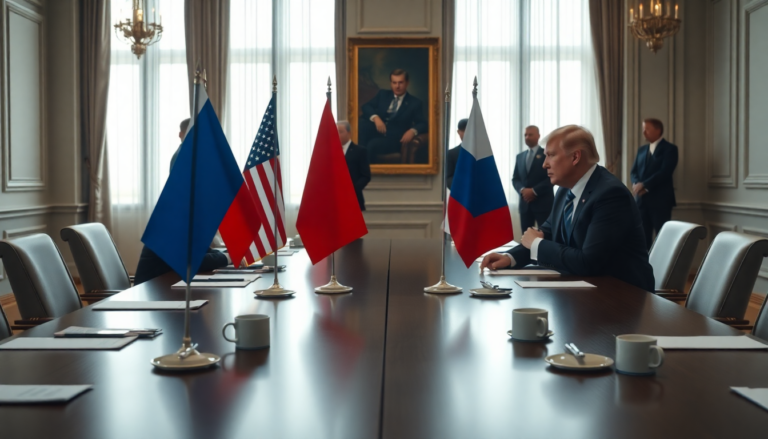Argomenti trattati
The relationship between Donald Trump and Vladimir Putin has captured headlines and sparked debates, becoming a focal point for discussions about international relations. As these two leaders navigate their complex political terrains, their interactions have significant ramifications—not just for their nations, but for the entire world. But what really lies beneath the surface of their relationship? Let’s dive into their past meetings, the context that shaped them, and what the future might hold.
Historical Context of Trump and Putin Meetings
From the very start of Trump’s presidency, his ties with Putin have drawn both praise and criticism. Their first major encounter took place at the G20 Summit in Hamburg in July 2017, where they tackled pressing global issues like cybersecurity and terrorism. This initial meeting set the stage for a relationship marked by both admiration and moments of tension. But how did this dynamic evolve over time?
Fast forward to July 2018, during the Helsinki summit, when Trump’s comments siding with Putin over U.S. intelligence findings on Russian interference in the 2016 election left many in shock. By expressing confidence in Putin’s denials and questioning the reliability of his own intelligence agencies, Trump ignited a firestorm of backlash from both sides of the political aisle in the U.S. This incident highlighted the intricate nature of their connection, revealing Trump’s inclination toward a more conciliatory stance on Russia—an approach that sharply contrasts with traditional U.S. foreign policy.
In 2019, despite rising tensions surrounding the Ukraine crisis, Trump continued to advocate for improved U.S.-Russia relations. He frequently expressed his belief in his ability to negotiate peace, showcasing his unique approach to foreign affairs, which often prioritizes personal diplomacy over multilateral discussions. But can personal diplomacy really yield the desired results in such a complex landscape?
The Current Landscape and Future Implications
As we move into 2023, the geopolitical landscape has shifted dramatically, especially with the ongoing conflict in Ukraine. Trump’s recent comments about Putin have fluctuated between admiration and frustration. While he has previously lauded Putin’s strategic moves, he has also threatened sanctions and voiced disappointment over the war. This duality underscores the challenges both leaders face as they juggle their public personas amidst intricate international issues.
Looking ahead, the upcoming meeting in Alaska stands as a pivotal moment. For Trump, it’s a chance to assert his stance and potentially negotiate a ceasefire, which he has labeled a “feel-out meeting.” Meanwhile, for Putin, this meeting offers a golden opportunity to improve his global image and perhaps lighten the sanctions that Western nations imposed after the invasion of Ukraine. The stakes are high for both, as they both need to balance domestic pressures with international expectations. But what will this mean for the future?
Critics are wary that this meeting could give Putin a platform to further his agenda, especially considering the exclusion of the Ukrainian President. This raises important questions about the legitimacy of any discussions regarding Ukraine’s future. The risk of miscommunication or misinterpretation during such high-stakes negotiations is significant; both leaders have demonstrated a flair for making bold statements that may not reflect the realities on the ground. How will they navigate this potential minefield?
As we look to the future, the relationship between Trump and Putin will undoubtedly shape not just U.S.-Russia relations, but also the broader geopolitical landscape. The history of their meetings offers valuable insights into their evolving dynamic, which is a mix of cooperation and contention. With the next summit on the horizon, the world will be watching closely to see if these two leaders can overcome their differences and discover common ground.
Ultimately, the success of their interactions will depend on their ability to address the multifaceted challenges they face while pursuing their respective agendas. History has shown that the path to diplomatic success is often riddled with obstacles, but in the realm of international relations, every meeting carries the potential for substantial change. Are we ready to see how this chapter unfolds?

